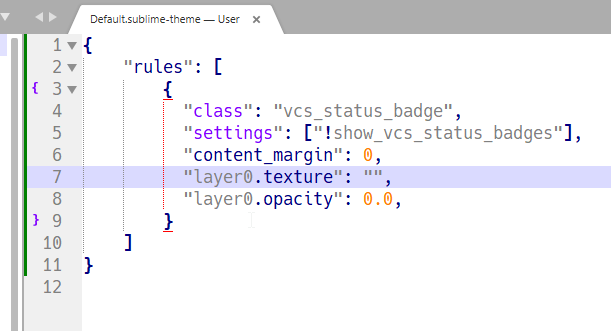
- #Show hidden folders in sublime for windows how to
- #Show hidden folders in sublime for windows code
- #Show hidden folders in sublime for windows windows
Users can customize the available menus by creating an appropriately-named file in their Packages/User/ directory.
Simply copy the path to the clipboard, then type “ sublwp” and you’re done. To find the 'id' of entries in the Main.sublime-menu, use the View Package File command from the command palette and select Default/Main.sublime-menu. I’ve turned this into a basic TextExpander snippet. Of course, you can add and remove directories or files as you require and it doesn’t have to apply to WordPress: you can use this method to hide any directories or files you want.
#Show hidden folders in sublime for windows code
#Show hidden folders in sublime for windows how to
Save the current open directory as project (Project > Save Project As) AppData is hidden and needs to be manually set to be displayed. I’ve found what triggers this, and how to keep it from happening.Display CR LF or CRFL EOL Characters in Sublime Text Editor. To hide files from the sidebar, you’ll need to: Now press: Command (Control for Windows) + Shift + P and type Raw Line Edit: View Line Ending, Note this will work only for saved file and not a unsaved tab with some text in it, You sould see and new section that shows the line ending character details. There is an easy way to hide these files from the Sublime Text sidebar, as illustrated below (left: default, right: hidden files). WordPress comes with a bunch of files and directories that I rarely need to touch (wp-includes, wp-admin, wp-cron.php, etc). Just go to your desired directory and open a command prompt and input this command.I spend a lot of my time developing WordPress sites in Sublime Text 2. Usually, it will be at C:\Program Files\Sublime Text 3. STEP - 4: Add path to your sublime installation

STEP - 3: Click on the path and then edit STEP - 2: Select the environment variable option
#Show hidden folders in sublime for windows windows
STEP - 1: Search for Environment Variables in the windows search In windows by pressing the alt key the tabs used to show up. In this article, I will show how to do the same thing using Sublime Text in windows. I used the Hide tabs option from the View < Hide Tabs, in my Sublime Text 3 editor. This simple step has made me more productive. and VS code will open with all the files in that directory. In some cases, I just want to quickly get up and going with as little friction as possible and Sublime text is the perfect answer for those scenarios.Īs I mentioned above, one of my favourite features of VS Code is that it can be opened from any directory using the command code. So begin by going to the bottom left of your taskbar and click: 'Start' Step - 2: You will need to open/start the Windows 'run.exe' and search for the 'regedit.exe' in the input field. Unlike more basic text editors, Sublime comes packed with features for quickly selecting and modifying text, and auto-complete features that help you type faster such as. You will need edit the Windows Registry to change a setting/registry key for your Windows operating system. Sublime Text is a powerful text editor designed for programmers and available on Windows, macOS, and Linux. But, it's a bit bulky and takes a lot of resources. The Sublime Text editor with the Solarized (dark) color theme. Pycharm is the OG python IDE and it has all the features that you might want.

These days I am coding more in python and my interest has shifted towards python IDE's such as Pycharm and Sublime text. If you modify either of those settings the folder will be shown. However, this only works in Finder, not in applications Open/Save dialogs. The folder cant be seen because 1) the folder is marked as 'hidden', and 2) the Windows Explorer setting for whether to show hidden folders is set to leave them hidden.
If you don't see this option, double-click the Hidden files and folders line of text. Adding individual directories (Unix-style paths, even on Windows) Adding/excluding files based on wildcards Adding symbolic locations (

 0 kommentar(er)
0 kommentar(er)
